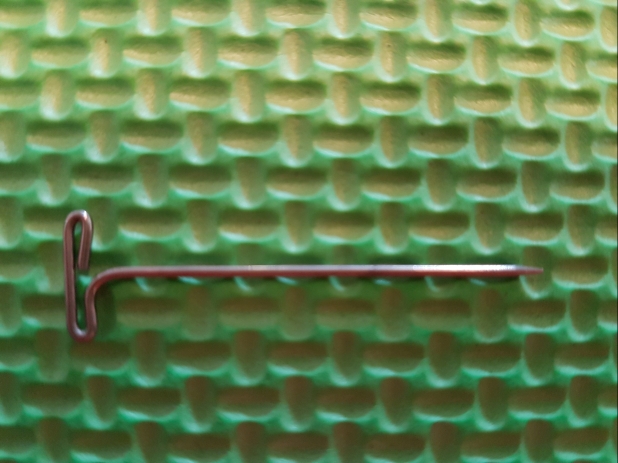Today I would like to talk about blocking crochet, something I am often asked about, although the principle applies equally to knitting. People often say to me “I’ve never blocked my work, don’t need to”, and frankly in a lot of cases one can tell. Blocking your work brings out the best in it, makes it uniform, flat and shapely (where necessary). It gives your work a finished and professional look. If you use acrylic yarn, then it is often likely that items won’t need blocking, but if, like me, you have a penchant for natural fibres read on. It is rare that natural fibres don’t need blocking.
The image below is a square I made using Stylecraft Batik, which is 80% Premium acrylic and 20% wool. I made 48 of them, and as they came off the hook they were stuffed in my project bag waiting for the next step. This square definitely needs blocking.

Methods
Blocking can be done in a few different ways largely depending on the fibre content of the project to be blocked, and the tools you have to hand. Generally speaking you have wet blocking and steam blocking.
Steam blocking can be done by simply using the steam setting on your iron, pinning out your work and applying steam close to the item, without actually touching it. It’s very effective, but it is possible to steam the life right out of fibres with acrylic content. Alternatively if you have a clothing steam machine, they can be very handy too.
Then there is wet blocking, my preferred method. You either wet the work completely (taking care to squeeze out the water, but do not wring your work) and then pin out, or pin the work out carefully and then using a spray bottle apply the water to the item using the mist setting. I know it sounds complicated but it really is easy, and you will see a massive difference in your finished work.
Tools
Blocking can be done with relatively simple tools – some rust-proof pins and something to pin the work to (even towels will do), so it needn’t be an expensive undertaking. If you find yourself blocking a lot, however, you may want to consider getting a few items to make it easier. If you love making lace, you’ll probably need blocking wires, which I don’t use, so they aren’t dealt with here.
The image depicts the basic items I use.

I use the KnitPro blocking mats, but you can easily use the kiddies interlocking mats that are readily available in many shops. They work very well for this purpose and are easy on the pocket. Indispensable to blocking are a good box of T-pins or blocking pins. They are made from a high grade stainless steel and are completely rust-proof. I really recommend you don’t use ordinary pins as you may find them staining your work with rust, and that would be dreadful. You’ll probably need quite a lot of pins, but you’ll soon be able to determine what that number is for you.

Lastly a plain old spray bottle which you can get just about anywhere, filled with water.
Method: Wet blocking
On a flat surface (I like to commandeer the dining room table) I like to pin out my work to the mats and dampen them with the spray bottle on the mist setting.

Once the items are suitably damp they are simply left to dry. If I have a large number of items I try to get as many as possible onto the mats.

Drying time can vary depending on where you live, in terms of humidity and temperature, and the fibre content of your item. Cotton, for example, can take quite a long time to dry, whereas acrylic dries fairly quickly.
Once the items are dry, simply unpin and that’s it. Job done.
When to block motifs
It is recommended that when you are making motifs for a blanket or other item that you block before joining. Some prefer to block the finished blanket, but it really is not advisable. Blocking before joining has the added advantage of making the motifs easier to join together.

I really hope this post has demystified blocking, and showed how easy it really is. Blocking can truly make the difference between an ordinary finished item, and something quite extraordinary.
And that’s it for today. Thank you for reading. Wishing you all a wonderful week.
I used to be one those people who didn’t see the point of blocking. But then I tried it once on a whim and I was totally converted. I block everything now!
LikeLike
It makes such a difference, doesn’t it? My love of natural fibres forced me into it, and now I can’t imagine not doing it.
LikeLiked by 1 person
I couldn’t believe how much of a difference, it was like a whole new project!
LikeLike
Pingback: Glorious Grannies | Gina and the Funky Sheep
Pingback: Joining granny squares as you go | Gina and the Funky Sheep
Pingback: Recent Projects & Yarny Goodness | Gina and the Funky Sheep